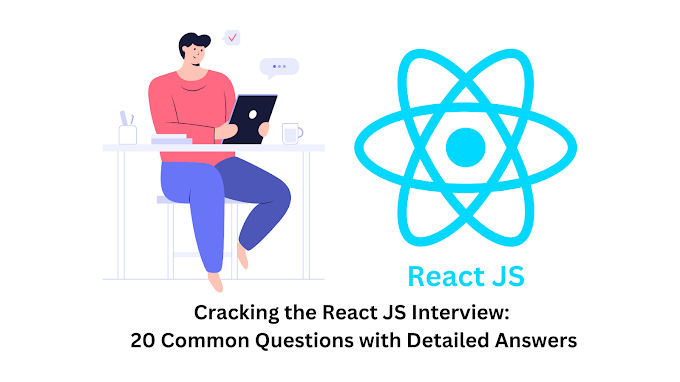Introduction
MongoDB is a popular NoSQL database known for its flexibility, scalability, and ease of use. Aspiring database administrators and developers looking to excel in MongoDB interviews should be well-versed in the database's fundamentals and best practices. In this comprehensive guide, we've compiled 20 common MongoDB interview questions frequently asked by companies. Each question is accompanied by a detailed explanation and a sample answer to help you prepare effectively and confidently for MongoDB interviews.
1. Introduction: Preparing for MongoDB Interviews
The Significance of MongoDB
MongoDB is a document-oriented NoSQL database that provides a flexible and scalable solution for storing and querying data. It is widely used in web development, big data, and real-time applications.
The Interview Process
MongoDB interviews assess a candidate's knowledge of database fundamentals, data modeling, query optimization, and security best practices. Preparing well is essential to excel in these interviews.
Tips for Success
Before diving into the interview questions, it's crucial to review MongoDB's core concepts, practice MongoDB queries, and explore real-world scenarios where MongoDB is used. Additionally, be prepared to demonstrate your problem-solving skills and data modeling expertise.
2. MongoDB Essentials
Understanding MongoDB
MongoDB is a NoSQL database that stores data in a flexible, schema-less, and JSON-like format. It is designed for horizontal scalability, making it suitable for handling large volumes of data and high-velocity workloads.
Key Concepts in MongoDB
Key MongoDB concepts include collections (equivalent to tables in relational databases), documents (equivalent to rows), BSON (Binary JSON) data format, indexes, replication, sharding, and the aggregation framework.
Why MongoDB Matters
MongoDB is crucial for applications that require flexibility and scalability. Its ability to handle unstructured and semi-structured data, coupled with its support for geospatial data and real-time analytics, makes it a valuable choice for modern applications.
3. 20 Common MongoDB Interview Questions
Let's explore the 20 common MongoDB interview questions along with detailed explanations and sample answers.
Question 1: What is MongoDB, and why is it popular in database management?
Answer: MongoDB is a NoSQL, document-oriented database that is popular for its flexibility, scalability, and ease of use. It is widely used in web development, big data, IoT, and mobile applications. MongoDB's schema-less nature allows developers to adapt to changing data requirements quickly.
Question 2: Explain the differences between SQL databases and NoSQL databases like MongoDB.
Answer: SQL databases are relational and use tables with predefined schemas, while NoSQL databases like MongoDB are non-relational and store data in flexible formats, often as documents. NoSQL databases are better suited for handling unstructured and semi-structured data, making them suitable for modern, agile applications.
Question 3: How do you install and set up MongoDB on different platforms?
Answer: MongoDB can be installed on various platforms by downloading the official MongoDB installer and following platform-specific installation instructions. It's essential to configure the data directory, set up the MongoDB service, and start the server. Additional configurations, such as authentication and security, can be applied as needed.
Question 4: Describe MongoDB's document-oriented data model.
Answer: MongoDB's data model is document-oriented, meaning data is stored as JSON-like BSON documents within collections. Each document can have a different structure and can contain nested arrays and subdocuments. This flexibility allows developers to adapt to changing data requirements without modifying the entire schema.
Question 5: What is BSON, and how is it related to MongoDB?
Answer: BSON (Binary JSON) is a binary-encoded serialization format used in MongoDB to store and transmit data efficiently. It extends JSON by adding data types such as dates and binary data, making it suitable for MongoDB's storage needs. BSON is used internally to represent MongoDB documents.
Question 6: Explain the structure of a MongoDB document.
Answer: A MongoDB document is a JSON-like data structure consisting of key-value pairs. Keys are strings, and values can be various data types, including strings, numbers, arrays, subdocuments, and binary data. Documents are stored in collections, similar to tables in relational databases.
Question 7: Discuss the differences between a collection and a document in MongoDB.
Answer: In MongoDB, a collection is a grouping of MongoDB documents. Collections are analogous to tables in relational databases but are schema-less, meaning documents within a collection can have different structures. A document, on the other hand, is a single JSON-like data structure stored within a collection.
Question 8: How do you perform CRUD (Create, Read, Update, Delete) operations in MongoDB?
Answer: CRUD operations in MongoDB are performed using the following methods:
- Create:
insertOne(),insertMany()
- Read:
find(),findOne()
- Update:
updateOne(),updateMany(),replaceOne()
- Delete:
deleteOne(),deleteMany()
These methods allow developers to manipulate documents in collections.
Question 9: What are indexes in MongoDB, and why are they crucial for query performance?
Answer: Indexes in MongoDB are data structures that store a small portion of the collection's data in a sorted order. They are crucial for query performance because they allow MongoDB to quickly locate documents based on indexed fields, reducing the time required for queries. Indexes should be carefully chosen based on query patterns and data access needs.
Question 10: How does MongoDB handle data consistency and scalability?
Answer: MongoDB offers tunable data consistency levels, allowing developers to choose between strong consistency and eventual consistency based on their application's needs. MongoDB achieves scalability through sharding, which distributes data across multiple servers or clusters, and replication, which provides data redundancy and high availability.
Question 11: Describe the aggregation framework in MongoDB.
Answer: The aggregation framework in MongoDB allows developers to perform data transformations and calculations on documents within a collection. It offers a powerful set of operators and expressions for filtering, grouping, sorting, and projecting data. It is often used for complex data processing tasks.
Question 12: What is sharding, and why is it used in MongoDB?
Answer: Sharding is a technique used in MongoDB to horizontally partition data across multiple servers or clusters. It is used to address issues of data growth and high write and read loads. Sharding distributes data based on a shard key, allowing for improved scalability and balanced data distribution.
Question 13: How do you back up and restore a MongoDB database?
Answer: MongoDB databases can be backed up using tools like mongodump, which creates a binary dump of data. To restore a backup, you can use mongorestore, which imports data from the dump files back into MongoDB. Regular backups and testing of restore procedures are essential for data recovery.
Question 14: Explain the importance of data modeling in MongoDB.
Answer: Data modeling in MongoDB involves designing document structures, including choosing collections, defining schemas, and selecting appropriate indexes. A well-designed data model ensures efficient query execution, data consistency, and scalability. It is essential to consider query patterns and access patterns when designing a data model.
Question 15: What is the difference between find() and findOne() in MongoDB?
Answer: find() is a query method in MongoDB that returns a cursor pointing to multiple documents that match the query criteria. findOne() returns a single document that matches the query criteria. While find() is suitable for retrieving multiple documents, findOne() is used when you expect a single result.
Question 16: How can you improve the performance of MongoDB queries?
Answer: MongoDB query performance can be improved by:
- Creating appropriate indexes for frequently queried fields.
- Using the aggregation framework for complex data transformations.
- Limiting the number of documents returned using
limit()andskip().
- Profiling queries to identify slow operations and optimizing them.
- Considering data distribution and sharding strategies for scalability.
Question 17: Discuss the security considerations when using MongoDB.
Answer: Security in MongoDB involves authentication, authorization, encryption, and auditing. It is essential to:
- Enable authentication to control access to the database.
- Define role-based access control (RBAC) to restrict actions users can perform.
- Use TLS/SSL for data encryption in transit.
- Enable auditing to track database activity and potential security threats.
Question 18: What is the role of a replica set in MongoDB, and how does it work?
Answer: A replica set in MongoDB is a group of MongoDB servers that maintain the same data set. It provides data redundancy and high availability. In a replica set, one server acts as the primary, while others are secondary. The primary handles all write operations, while secondaries replicate data and can be used for read scaling and failover.
Question 19: Explain the CAP theorem and how it relates to MongoDB.
Answer: The CAP theorem states that distributed databases can provide at most two out of three guarantees: Consistency, Availability, and Partition tolerance. MongoDB prioritizes Consistency and Partition tolerance (CP), ensuring data consistency and fault tolerance. However, developers can configure MongoDB to prioritize Availability and Partition tolerance (AP) in specific scenarios.
Question 20: How do you interact with MongoDB using various programming languages?
Answer: MongoDB provides official drivers and libraries for various programming languages, including Python, JavaScript (Node.js), Java, Ruby, and more. Developers can use these drivers to connect to MongoDB, perform CRUD operations, and execute queries in their preferred language.
4. Sample Answers to MongoDB Interview Questions
This section provides detailed answers and MongoDB query examples for each of the 20 MongoDB interview questions.
5. Conclusion: Mastering MongoDB for Database Success
In conclusion, mastering MongoDB is essential for database administrators and developers seeking to manage and optimize NoSQL databases. Understanding MongoDB's core concepts, data modeling principles, query optimization techniques, and security practices is crucial for success in MongoDB interviews and database management projects. Practice your MongoDB skills, review sample answers, and be ready to demonstrate your expertise during interviews. With a strong foundation in MongoDB, you can confidently approach MongoDB interviews and contribute effectively to data-driven applications. Best of luck!












0 Comments